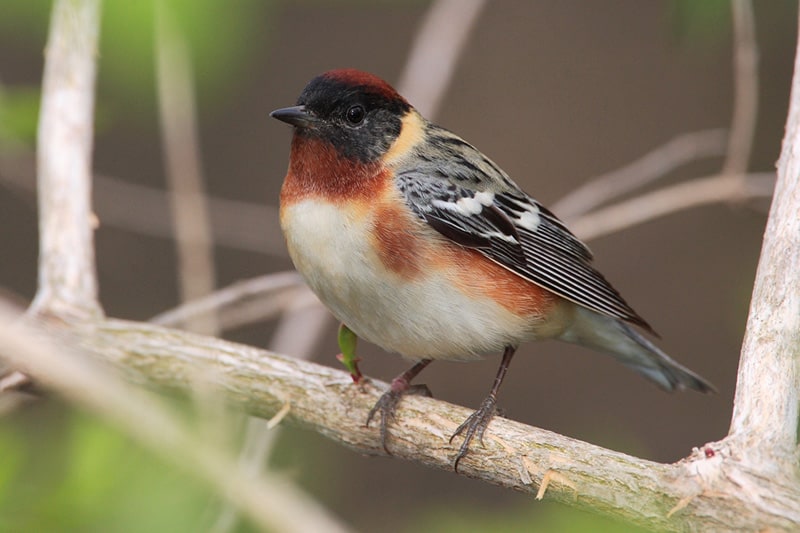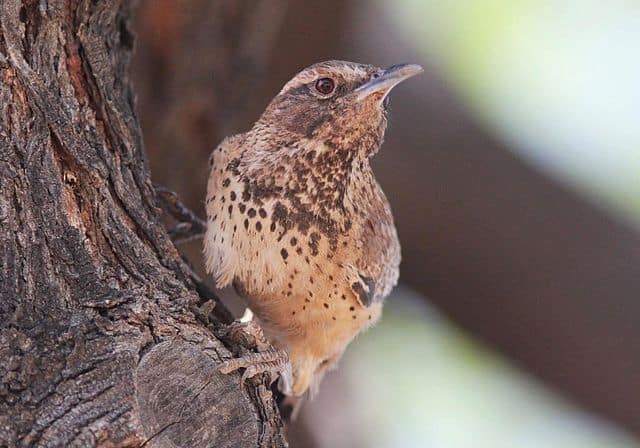Look For
The bay-breasted warbler is a small bird, but could be considered large compared to other warblers. The breeding male is distinctive with its black face, warm reddish-brown crown, throat, and flanks. This is contrasted by an off-white belly and a gray back accented with black stripes.
It also has a distinct yellow patch on its neck and white wing bars. The breeding female is a pale version of the male, with more monochromatic tones of greenish-grays and whites. It sometimes has pale reddish-brown patches on its flanks as well.
Listen For
The bay-breasted warbler’s song is repetitious with a consistent pitch. It makes a thin, high-pitched see see see sound.
Find It
Bay-breasted warblers breed in northern North America, from Canada’s prairie provinces, through the Great Lakes region and northeast into Newfoundland and Labrador. Their preferred habitat is coniferous forests dominated by spruce and fir.
Migratory birds, they spend their winter in the warmer climates of northwestern South America in second growth forests. The bay-breasted warbler’s international migration takes them south across the United States, where they are considered uncommon during spring and fall.
Feeding Behavior
Bay-breasted warblers primarily feed on insects and berries. During the summer breeding season they eat a variety of beetles, flies, moths, and caterpillars while primarily foraging among the branches of spruce trees. They are also known to eat spruce budworms, especially when there is a particularly high infestation rate. The abundance of spruce budworms in a particular year can determine the population of bay-breasted warblers. Fewer budworms mean fewer bay-breasted warblers.
Nesting Behavior
Bay-breasted warblers prefer to build their nests on a mid-level limb of a dense spruce, hemlock, or birch tree. Their nests are composed of twigs, grasses, mosses, and bark to form an open cup shape. They are lined with pine needles, bark strips, hair, and moss.
Females typically have 4-5 eggs that are off-white with dark brown or black markings. The female incubates the eggs for 12-13 days until hatching. Both the male and female feed the young until they are ready to leave the nest after 11-12 days.




